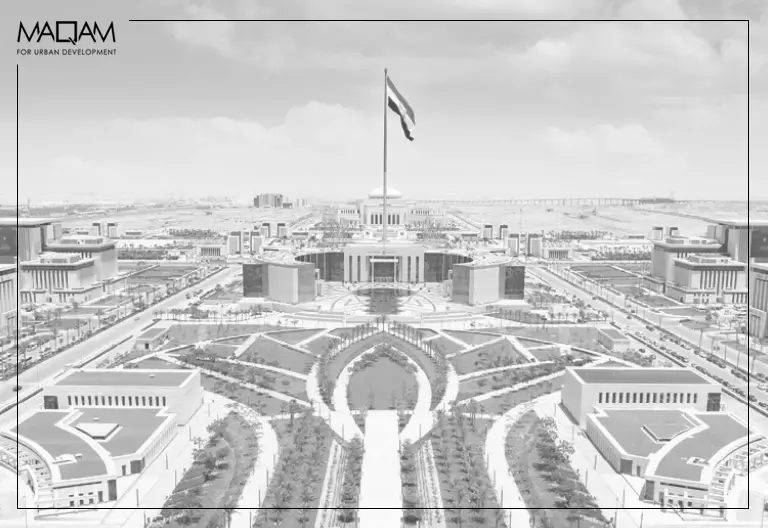A Practical Guide to Investing in New Capital

Investing in New Capital is increasingly becoming a pillar of Egypt’s long-term development strategy. Originally launched to relieve congestion in Greater Cairo and accommodate the country’s growing population, the New Capital is designed as a smart and sustainable urban and administrative center, and a key driver of economic growth.
Investing in New Capital, Egypt’s New Center
With all major government institutions relocating, infrastructure projects progressing, and strong investor interest from both local and foreign markets, NAC presents a timely opportunity. Investing in New Capital has evolved from speculation to a data-driven choice for investors focused on long-term value.
The demand for residential, commercial, and mixed-use spaces is growing steadily. As Egypt’s population expands and businesses seek modern infrastructure, the appeal of investing in New Capital has never been stronger.
Why the New Capital Is Central to Egypt’s Growth
The New Capital spans around 714 km², with expansion plans aiming toward 900 km². It is expected to host over 7 million residents and house Egypt’s main government operations, including ministries, the new presidential palace, and foreign embassies.
Its planning goes beyond real estate and can be considered the heart of Egypt’s most important administrative and infrastructural shift. The project represents a new direction for national development, aiming to balance population distribution and drive decentralization.
The New Capital is created with the most modern, integrated infrastructure in Egypt’s history, smart technologies, and sustainability features such as solar energy systems and digital governance. These innovations are designed to future-proof the city and ensure long-term functionality.
According to official government data, foreign direct investment in Egypt’s real estate sector rose to $303.2 million in 2024, an increase from $224.2 million in 2023. A significant portion of this growth is linked to developments in the New Capital.
Current Developments in the New Capital
Key districts in the New Capital are already operational or near completion. The Government District is active, and the Green River project, a 35 km landscaped area designed as a central park that will be twice the size of New York’s Central Park, is already open to citizens. This space is expected to become a focal point for recreation, commerce, and real estate development.
Schools, hospitals, commercial zones, and residential neighborhoods are being developed at a steady pace. Each of these districts is planned with connectivity, sustainability, and longevity in mind.
Population projections estimate that between 6.5 to 7 million residents will live in the city. This growing demand is reflected in the rise of property values and increased investor activity. Investing in New Capital is increasingly aligned with long-term urban planning and national policy. More investors are exploring mixed-use and residential projects with the expectation of stable rental income and capital appreciation.
Investing in New Capital offers a unique chance to participate in this momentum and gain a foothold before full market maturity.
New Capital Real Estate and Return
Property values in the New Capital have increased by approximately 40-45% annually since 2021, reflecting consistent demand and strong market momentum. This growth is supported by infrastructure development, government relocation, and rising interest from local and international buyers.
In addition to capital appreciation, the New Capital also offers strong income potential. Residential properties typically yield between 8% and 12% per year, while commercial units often generate returns of 10% to 12%. These figures indicate a market that is not only growing in value but also delivering reliable rental income for investors.
This dual return model, appreciation plus rental yield, is one of the key reasons why more stakeholders are investing in New Capital. As the city becomes more populated and functional, rental demand is expected to increase, especially in areas near transit lines, business districts, and educational institutions.
Investing in New Capital today positions investors to benefit from both short-term gains and long-term value appreciation.
Infrastructure and Connectivity
One of the most compelling features of the city is infrastructure that prioritizes integration and technology. A high-speed electric train (Light Rail Transit) and monorail system connect the city directly to Cairo and its suburbs, reducing commute times while linking economic areas. The city is designed not as a standalone space, but as a highly connected hub with seamless mobility.
Smart grids and AI-supported utilities anticipate demand. Renewable energy powers public buildings. Waste management is digitized.These technological systems enhance the quality of life and create a business-friendly environment that makes investing in New Capital even more appealing.
According to MDPI’s latest sustainability review, the New Capital is a “testbed for Egypt’s urban future,” with systems designed to adapt over decades. It is, in every sense, an infrastructure-first city. For investors, this focus on infrastructure means greater stability, more predictable growth, and less risk, factors that are essential when evaluating long-term investments.
Investing in New Capital Long-Term
The city continues to evolve, but its investment case is already well defined. With essential infrastructure in place, growing population demand, and sustained government support, the city offers a stable and future-ready environment for investors.
Entering the market at this stage allows buyers to benefit from competitive pricing, rising property values, and solid rental yields. For those focused on long-term capital appreciation or steady income from residential and commercial units, the New Capital presents a strong return profile.
Investing in New Capital is a strategic choice backed by planning, performance, and policy. It offers access to Egypt’s most actively developing urban center, one designed to support economic activity, real estate growth, and national transformation.
For regional and international investors alike, investing in New Capital represents more than just a transaction, it’s a way to align with Egypt’s future. From early-stage projects to completed zones with stable occupancy, the city offers diverse options across budget ranges and different investment strategies. Investing in New Capital offers a rare combination of growth, stability, and purpose.

